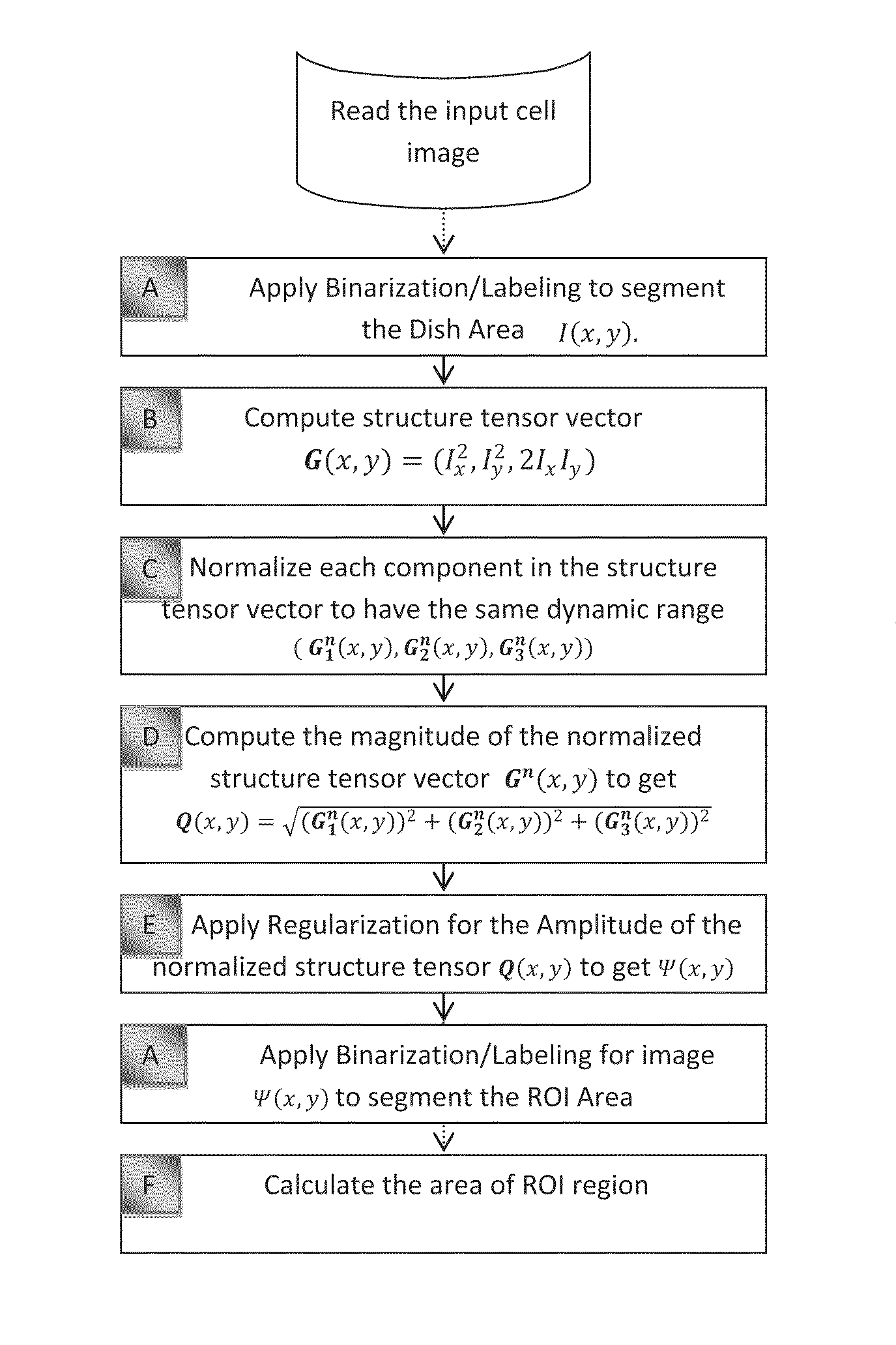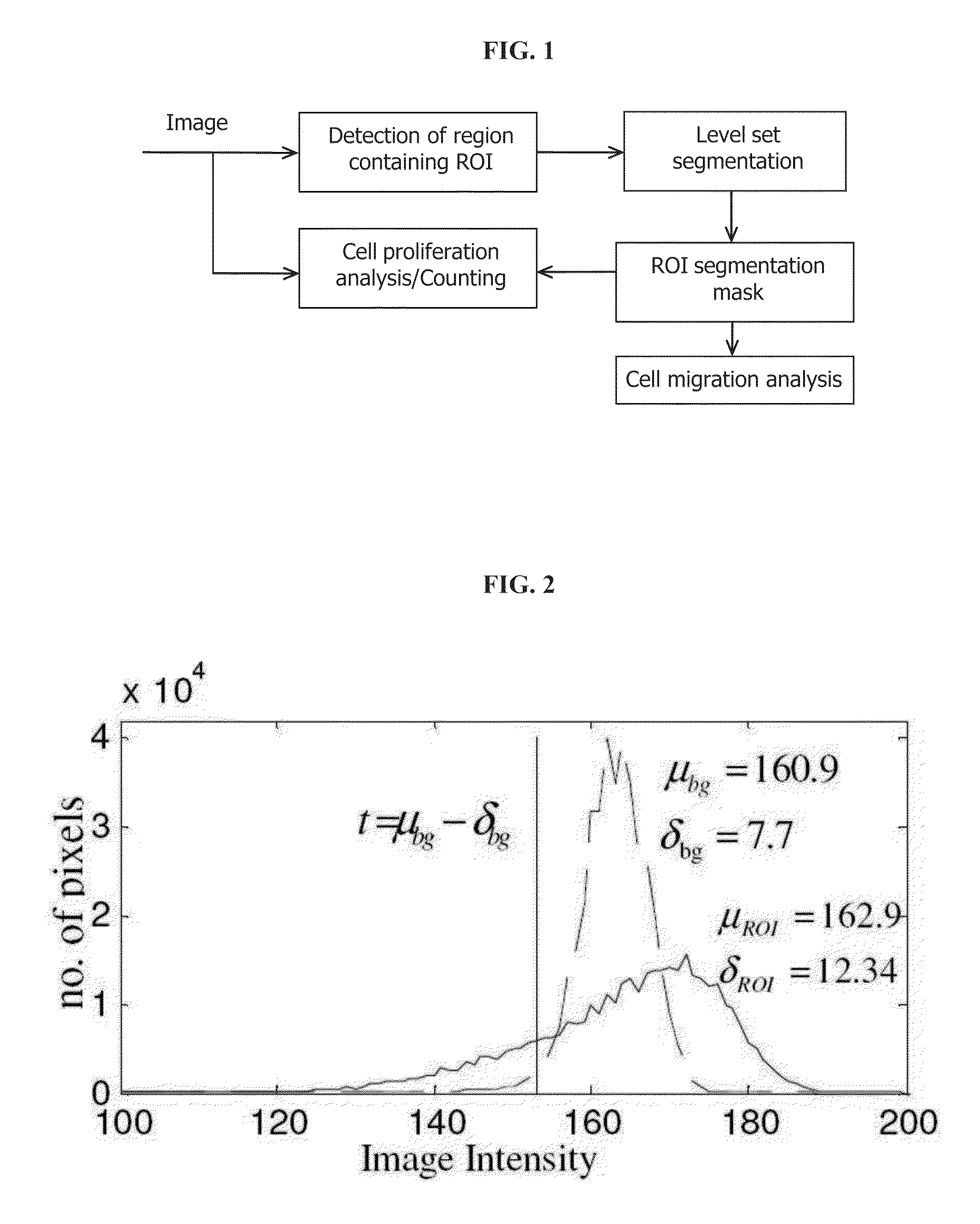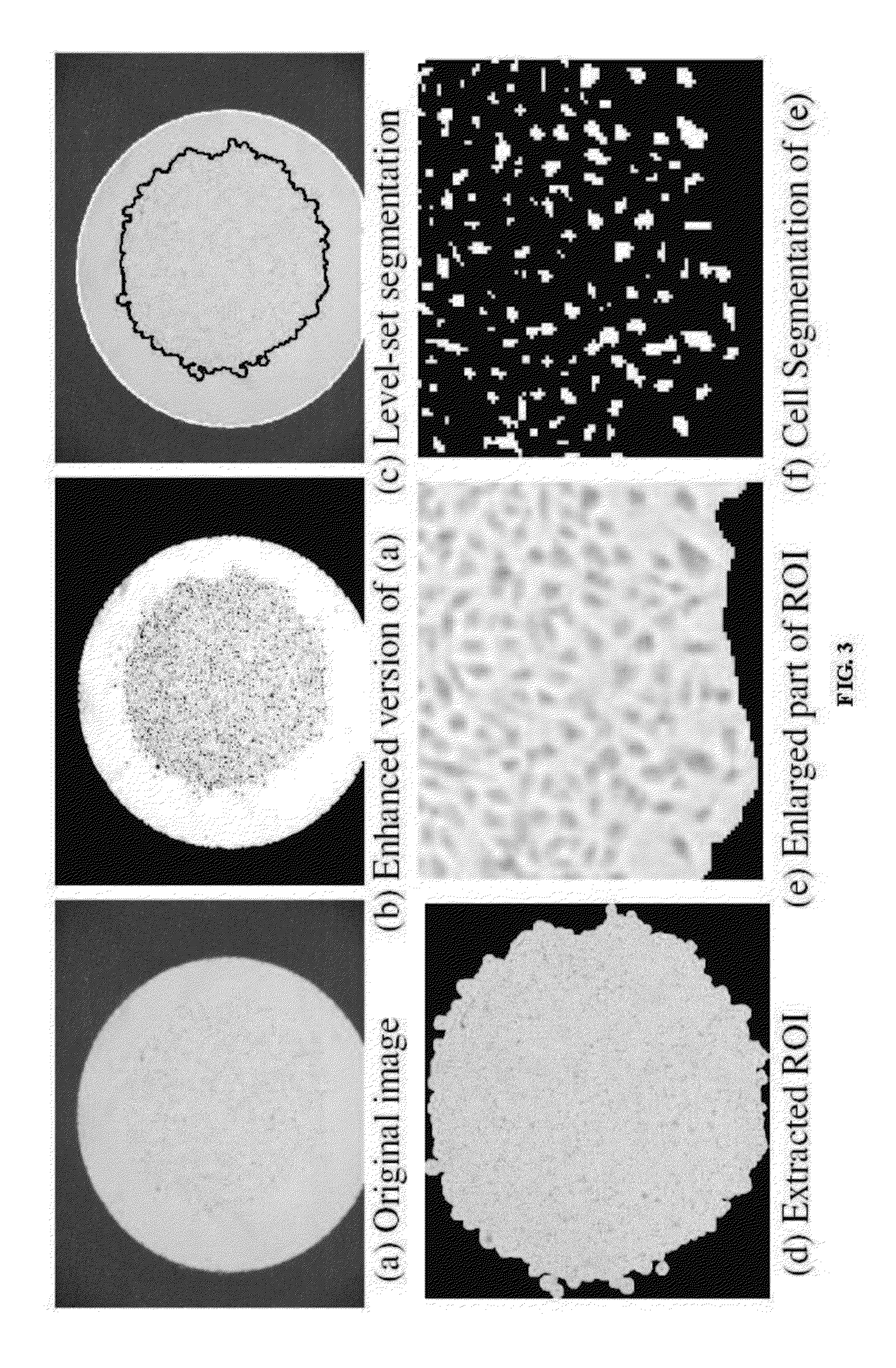Automatic Cell Migration and Proliferation Analysis
a cell migration and proliferation analysis technology, applied in the field of biological and cellular image processing, can solve the problems of piecewise segmentation failing to capture the object, the method of kachouie and fieguth (2005) is not robust in the presence of noise, and the method is not fully automati
- Summary
- Abstract
- Description
- Claims
- Application Information
AI Technical Summary
Problems solved by technology
Method used
Image
Examples
example 1
Cell Evolution Analysis (CEA) Scheme
[0042]The cell evolution analysis (CEA) scheme of one embodiment consists of the following two main parts (FIG. 1):
[0043]1—Cell migration analysis—achieved by determining and segmenting the region where the cells are concentrated, and then tracking the evolution of the contour of that region over time. This cell cluster region is denoted as the region-of-interest (ROI).
[0044]2—Cell proliferation analysis—achieved by segmenting and counting the cells inside the ROI at different time points.
[0045]As shown in FIGS. 3A and 3B, the considered illustrative bladder cancer cell images consist, each, of three different regions: 1) the ROI, 2) the region between the ROI and the outer circle (bright area), and 3) the region outside the outer circle (dark area). An automatic segmentation method needs to be devised to distinguish between these three regions. For the level-set based segmentation methods, two level-set functions are needed for the considered ima...
example 2
Cell Migration Analysis Using a Structure Tensor Feature Space
A. Cell Migration Analysis Scheme
[0061]The overall migration analysis is done by segmenting and tracking the ROI (Cell cluster) area at different time instances. Given two extracted ROI areas, At1 and At2, (t2>t1), the overall cell migration is given by (At2−At1) / (t2−t1).
[0062]The procedure starts by extracting the outer-circle using piecewise level-set segmentation (Vese and Chan, 2002) with one level-set function or using a histogram-based thresholding procedure. Then, the ROI is extracted by using an unsupervised texture segmentation procedure. This procedure consists of computing structure tensor features. These features can either be, for example, the components of a structure tensor vector that is computed at each pixel in the image, or can the amplitude of the structure tensor vector at each image pixel. The obtained structure tensor based image is then reguralized. This regularization can be performed for example ...
PUM
 Login to View More
Login to View More Abstract
Description
Claims
Application Information
 Login to View More
Login to View More - R&D
- Intellectual Property
- Life Sciences
- Materials
- Tech Scout
- Unparalleled Data Quality
- Higher Quality Content
- 60% Fewer Hallucinations
Browse by: Latest US Patents, China's latest patents, Technical Efficacy Thesaurus, Application Domain, Technology Topic, Popular Technical Reports.
© 2025 PatSnap. All rights reserved.Legal|Privacy policy|Modern Slavery Act Transparency Statement|Sitemap|About US| Contact US: help@patsnap.com



